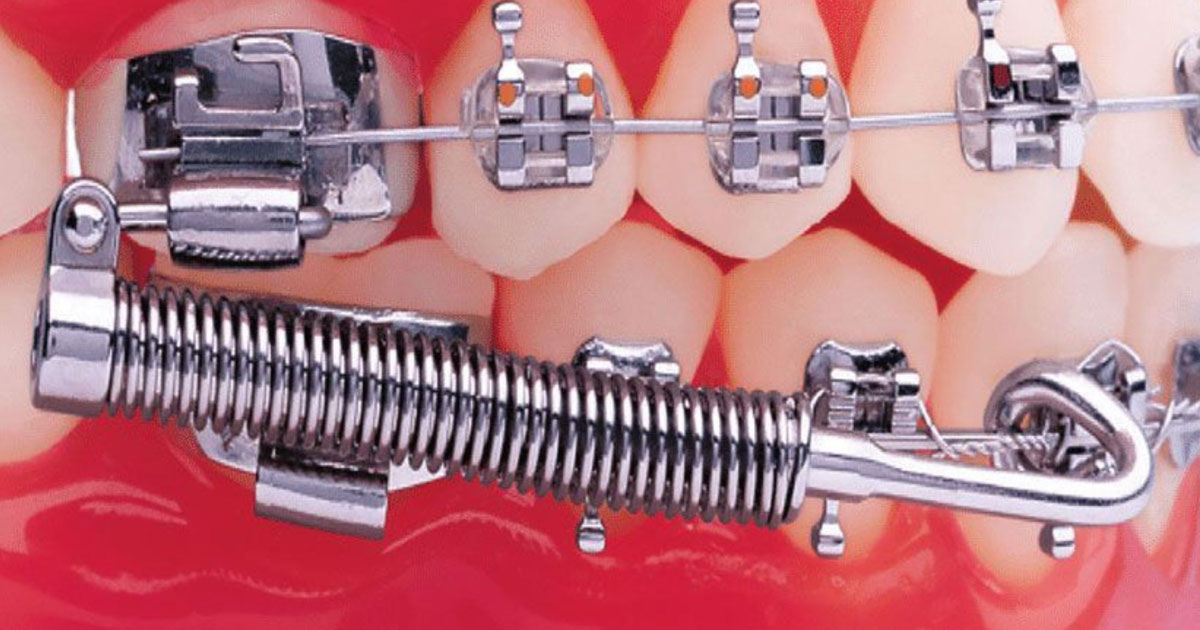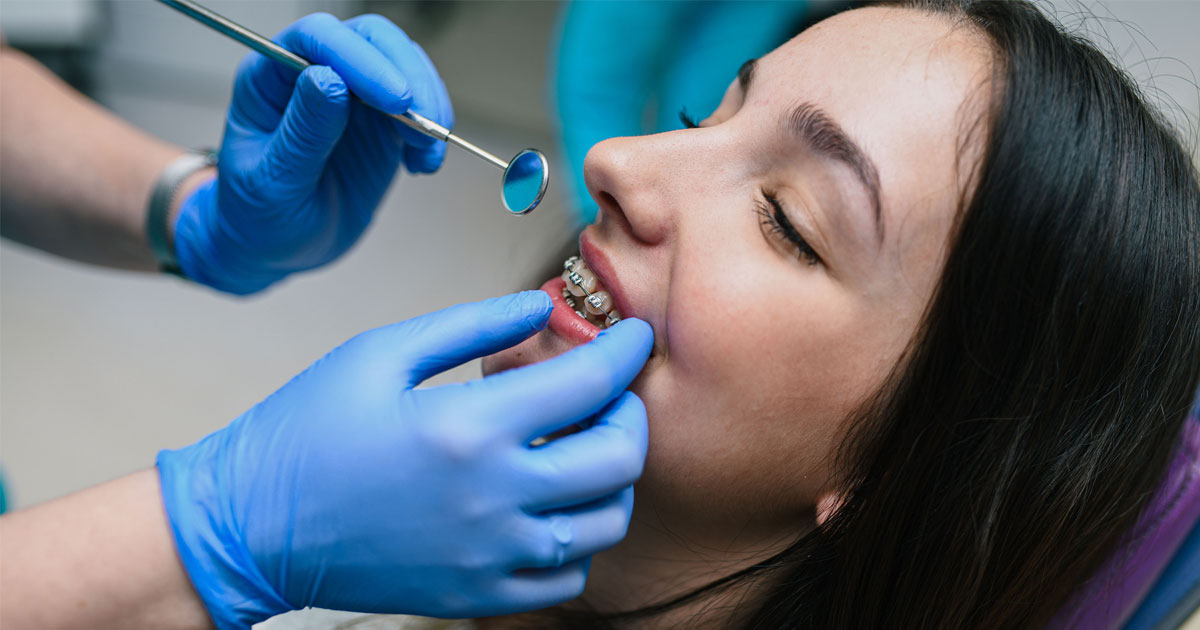People often get braces at a young age to realign teeth, addressing issues like overbites and underbites and preventing more significant dental problems in the future. What many don’t realize, however, is that coil springs can sometimes be required alongside braces to appropriately address bite issues. While braces and coil springs don’t always go together, as some patients won’t need coil springs at all, there are many specific cases where coil springs will be beneficial.
Should you need coil springs to supplement your braces, it’s essential to find the right coil springs for the job. Our team at Robison Orthodontics recommends an appliance known as Forsus. Moving a tooth with coil springs may be essential for extensive problems that ordinary braces may not be able to address. Forsus is specifically created to move teeth into the correct position to prevent injury and other additional orthodontic problems down the line. Our team at Robison Orthodontics highly advises patients to consider Forsus when looking for the most optimal coil springs to address their needs.
What are Coil Springs
A coil spring device is a device based on a simple machine: a spring, which can use mechanical energy to put force onto other objects. These are usually made with metal, although you can also use elastic materials or hardened steel. Coil springs can be found in several devices outside of orthodontics, such as trampolines and farming equipment.
When used in dental and orthodontic care, coil springs are designed to push teeth apart or bring them closer together using gentle force. The coil spring creates space between your teeth by sitting on the archwire and exerting force on the brace brackets to push teeth apart. When braces alone cannot move teeth efficiently, coil springs can provide additional force to help realign teeth.
Common Cases Where Coil Springs Are Required
Moving a tooth with coil springs may be the most effective solution for many individuals with dental issues. You may wonder which cases specifically require coil springs, and we’ve listed some of the most common ones below.
Tooth Extractions
In some cases, tooth extraction is required to maintain your oral health and protect your teeth. However, in order to maintain the space left behind after removing the tooth, the orthodontist may use a coil spring device to keep your nearby teeth apart. As the bone and gum tissue heal from the extraction, teeth naturally try to move into the space your extracted tooth resided in, which could cause misalignment and necessitate further treatments in the future.
Crowded Teeth
We’ve worked with some patients who didn’t have the necessary space in their dental arch to fit all of their teeth properly. In this case, coil springs can be implemented to create space by using small amounts of force between your teeth. Creating space can improve your alignment, effectively improving your bite, eliminating certain speech issues, and preventing excessive plaque buildup.
Uneven Dental Arches
You may have enough space in your dental arch to fit your teeth, but if it’s uneven, your teeth could remain misaligned and cause issues when eating or speaking. In this case, coil springs can be installed to correct the unevenness. Coil springs can apply pressure to the surfaces the brackets are installed upon, realigning your arch and making future treatments simpler.
Diastema
Diastema, otherwise known as gaps in between the teeth, can be closed with the help of coil springs. Gaps are often addressed for cosmetic reasons, but they can also pose dental health risks. For example, if you have a large gap between two of your teeth in the back, you may injure that area when trying to eat. A coil spring can be used to push your teeth together and realign these teeth.
Why Is Forsus Recommended?

If you or a loved one have one or more teeth out of place, causing discomfort, misalignment, or problems when eating, you should consider having a Forsus device installed. Forsus is a high-quality coil spring appliance that provides enough force to move your teeth into the proper position. Forsus also eliminates the need to wear headgear or elastics and may even improve the rate at which your teeth move into place.
It can be challenging to remember to wear a retainer or other dental product, but with Forsus, you won’t have this issue. Because it remains in place and constantly works to move your teeth into their correct positions, you can stay focused on your daily tasks without worrying about the device.
It’s also possible that you may be able to avoid the need for jaw surgery If you’ve been told previously that you need jaw surgery to properly align your bite, Forsus may help. Because Forsus can correct jaw and bite issues, you may not need more invasive procedures in the future. That’s why we recommend Forsus over braces alone for situations like yours.
In short, Forsus provides a number of specific benefits compared to other orthodontic solutions, including:
- Simple and discreet jaw realignment
- No reminders to wear headgear or other appliances
- More comfortable and convenient when compared to headgear
- The ability to eat as usual with the appliance installed
- The potential to avoid jaw surgery
- 24/7 treatment
- And more
Due to its simplicity and efficiency, Forsus has been recommended by thousands of orthodontists across the nation, including our team at Robison Orthodontics.
How Forsus is Installed
Forsus devices usually aren’t applied immediately, as your orthodontist will wait until you’ve worn braces for at least eight to twelve months to implement the device. Braces can handle some of the initial work in treating misalignment, but if coil springs are placed at the start, your teeth may not align correctly. Coil springs are known for their strength, and if a tooth is moved too much too soon, it can prevent proper realignment.
The installation process typically consists of five steps:
- Meet the orthodontist- The initial consultation gives you a chance to explain the issues you’re having, and the orthodontist can examine your mouth to assess these issues and determine the most reliable solution.
- Apply braces- Coil springs such as Forsus cannot be used unless you have braces installed. Once you’ve worn braces for at least eight months, you can move to the next step.
- Install Forsus- Coil springs can then be installed to the brackets on your upper molars. Then, a force rod is attached that creates tension, moving your jaw into the right position.
- Check on your progress- At regular intervals, your orthodontist will check your situation to determine if Forsus is working as intended.
- Remove the device- After anywhere from three months to a year, you’ll have the Forsus device removed as your jaw and alignment issues are resolved.
Are There Side Effects with Coil Springs?
Due to their unique characteristics, coil springs may come with side effects patients should consider before having them installed. However, side effects are typically mild and comparable to traditional braces. We’ll also provide some tips to help you avoid or address any issues.
Physical Discomfort
The most common side effect of coil springs like the Forsus device is some initial discomfort after having the springs placed. However, this is completely normal and should calm down after a few days. Speak with your orthodontist if pain persists after three or four days.
Allergic Reactions
While this is quite rare, you could experience an allergic reaction to the material in the coil springs. If you have a metal allergy, especially an allergy to nickel, let your orthodontist know so they can switch out the materials.
Oral Hygiene Difficulties
It’s vital to keep your oral hygiene in check, but it can seem as if the coil springs get in the way when brushing your teeth. However, as coil springs can actually reduce the time you’ll need to spend wearing braces, they can also reduce the time your braces are impacting your oral hygiene routine. Brush after each meal and consider using a tool designed especially to brush around braces and coil springs to ensure you’re removing plaque and preventing tooth decay. It is also highly advised you schedule regular dental cleanings.
Loose Springs
In rare cases, if you open your jaw too wide, coil springs may disengage on one end and become loose. Fortunately, this is typically very easy to remedy on your own. If you’re having trouble, your orthodontist can help you address the issue.
Forsus Tips to Consider
Despite the device’s overall benefits, you may have additional questions regarding the device. There are a few tips to keep in mind as you consider or continue wearing Forsus.

Dealing With Discomfort
As mentioned, like most other orthodontic devices, Forsus may cause you a bit of physical discomfort at first as you become accustomed to the new sensation it causes. In most cases, over the counter pain relievers are enough to combat any initial discomfort. However, if your condition does not improve after about four days, or if a sore develops, we advise you to contact us to determine whether you should schedule a visit.
In addition to the initial discomfort caused by coil springs, some people experience the formation of small ulcers inside the mouth due to Forsus springs rubbing against the cheek. You can leave it alone and let your mouth adapt to the feeling of the Forsus device, or you can place cotton rolls into your mouth between the spring and your cheek until you feel better. If you feel you are biting onto the device when eating, refrain from biting and visit your orthodontist as soon as possible. Biting down on the Forsus appliance can break the device or damage your teeth.
Eating with the Forsus Device
It is essential to keep in mind that healthy eating habits are essential as you wear the coil springs. You may want to avoid sticky or hard foods, as these can affect the coils or disrupt your device’s performance. It is also important to clean your teeth properly after meals to avoid excess plaque and debris. Plaque and other food debris can get into gaps between your teeth, causing tooth decay or preventing proper tooth movement.
Remember to Floss
You may think that wearing braces across your teeth means that you can’t floss properly, but there are still methods to clean between your teeth to remove excess debris. You can use specially-made orthodontic floss or a floss threader to clean between your teeth. However, make sure you do this carefully, as being too tough can damage your braces, springs, or teeth.
You can also try using a Waterpik to help keep your teeth clean while wearing braces. Learn how to use a Waterpick with braces here.
Addressing Loose Coil Springs
While there are techniques you can practice to avoid dislodging or disconnecting your spring, it can still happen when you least expect it. If it does become loose, you can try sliding the rod and spring together. However, this is not a guaranteed solution, and if you can’t fix it on your own, don’t continue to aggravate the situation. Instead, visit your orthodontist.
Robison Orthodontics Is Here for You

Moving a tooth with coil springs can make a significant difference in your oral health and your confidence. Cosmetically and functionally, coil springs are a more efficient way to realign your teeth so you can eat with confidence and restore your smile. While these devices are simple to wear and less obtrusive than traditional orthodontic appliances, they can help you improve your oral health. Forsus in particular has been successful among patients and continues to be a prevalent option for realigning teeth and the jaw.
At Robison Orthodontics, we take pride in getting to know our patients so we can craft personalized orthodontic solutions that will help them achieve their healthiest smile. We know how powerful coil springs like Forsus can really be in addressing your oral health, and if you’re struggling with a jaw misalignment the Forsus device may be able to help you.
If you’re ready to book an appointment, or if you have any lingering questions about the use of coil springs in your orthodontic treatment, contact our team for a free consultation today.

Dr. Tyler Robison is an alum of Mesa’s Mountain View High School. He graduated from Brigham Young University before being accepted to the “Top Ten-nationally ranked” University of Louisville in Kentucky, where he earned his Doctorate in Dental Medicine and a Master’s Degree in Oral Biology. He graduated with honors in the top ten percent of his class. Dr. Robison continued at the University of the Pacific in San Francisco, where he received a second master’s degree in dental science and his orthodontic certification.


